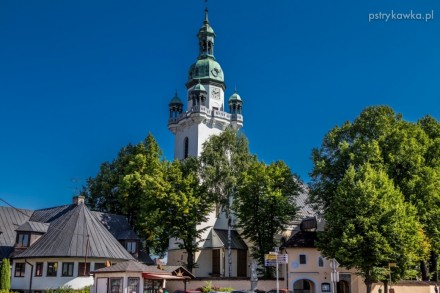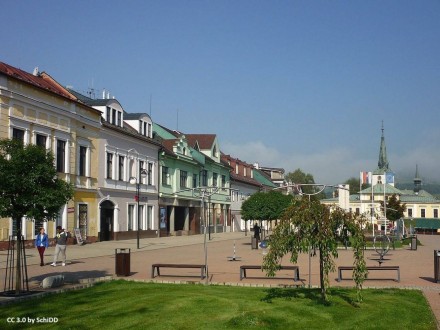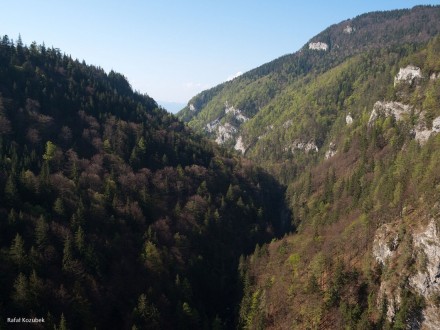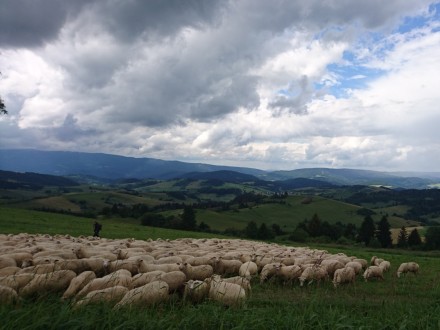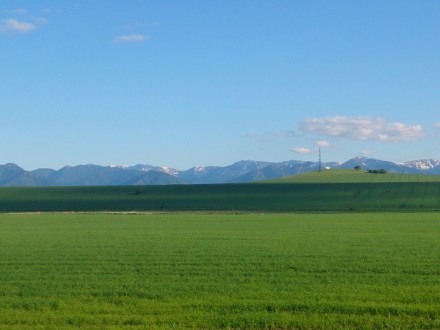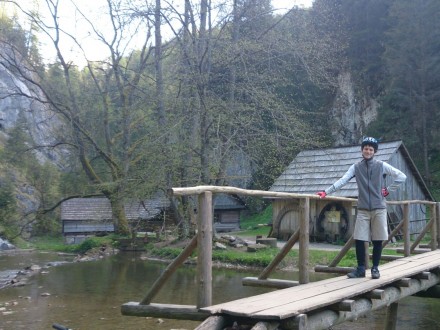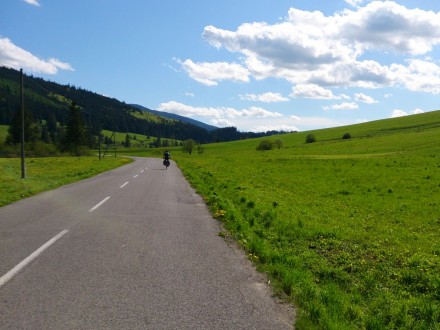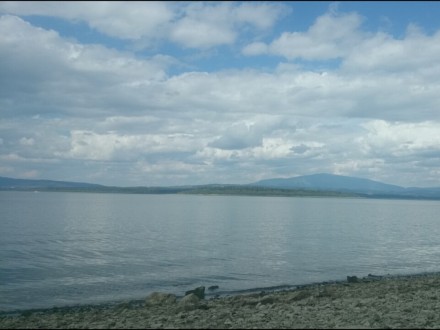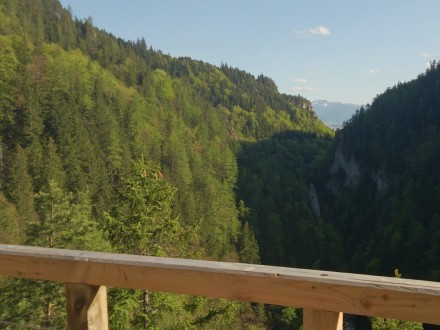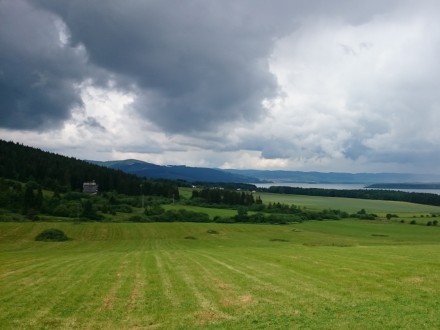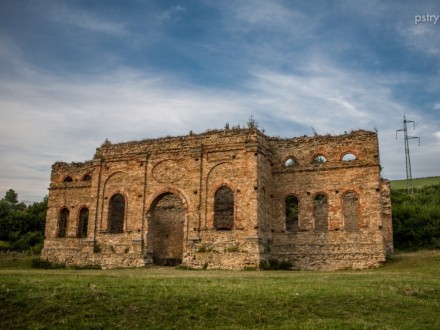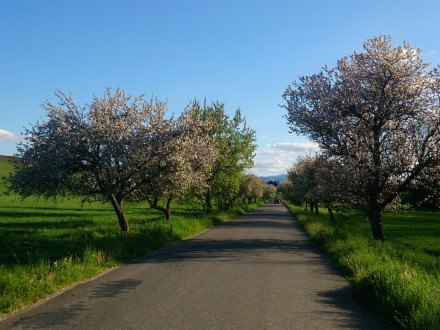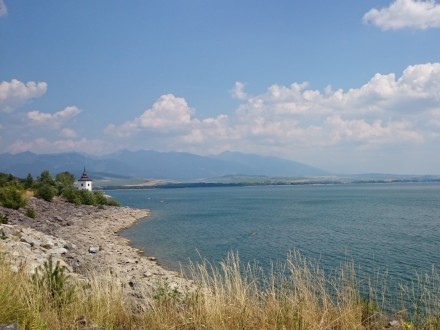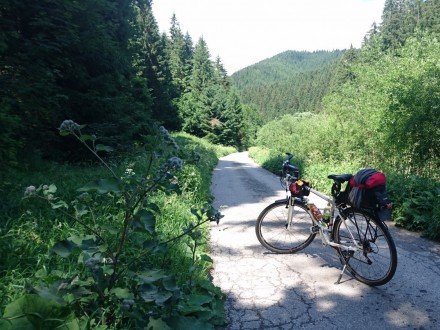Slovakian history trail
Location:
Słowacja
Category:
hard
Distance:
81 km
Start:
Trstená
End:
Dolný Kubín
Gpx:
Rodzaj nawierzchni:
asfaltowe ścieżki rowerowe
drogi publiczne
Rodzaj roweru:
SPD - trasy odpowiednie dla każdego rodzaju roweru, tzn. szosowego, crossowego i górskiego/MTB
TRK - trasy odpowiednie dla roweru crossowego i górskiego/MTB
The Slovakian national spirit wasn’t born in Bratislava; it was born in the north - in Liptov and Orava. The trail leads us through green valleys located among various mountain ridges - from the Beskids areas around Orava Lake, through Tatra foothills, to deep gorges of the rocky Veľký Choč. Here, besides the beauty of nature, we will find the attractive old monuments, allowing us to see and feel the Slovakian spirit.
Total length: 81.5 kmTotal ascent: 990 mRiding time (without breaks): 5 h 23 minRequired experience: moderateNecessary physical fitness: highStart and end: Trstená, Dolný KubínAccess: train (Trstená, Dolný Kubín), car
Notes:Helmets required in Slovakia not suitable for kids riding on the bikesmost of the route on the roads with motor traffic you can check the train timetable at www.slovakrail.sk
Main attractions of the route:
Orava Lake: The Slovakian biggest body of water, with an old church on a small island.Kvačianska Dolina: a difficult rocky gorge with hidden old watermills.Liptovská Mara: the Slovakian cousin of Lago di Garda and the church ruins just above the sheet of water - the only souvenir from the inundated villages that disappeared underwater.Sestrčská Dolina: a deep valley, almost a gorge, crossing the Veľký Choč range. Peace, greenery, and us - a very pleasant experience. Wooden church in Leštiny: wooden architecture beauty spot, 17th-century evangelical church with beautiful rich polychrome paintings. UNESCO listed.Dolný Kubín: a small town with great historical importance in Slovakia. One of the crucial places of the period of the awakening of national awareness (19th century).
Description:
From Trstená, connected by the Route around the Tatras with Nowy Targ, we go north to cross the pass and admire the amazing areas of Orava Lake - located so close, but still so unknown for the Polish people. A fast downhill ride gets us in the area of Nowe Ujście, where the sunbathing enthusiasts (at the cost of an additional uphill ride) can go to rest. After 4 km from the pass, we reach the water dam, which over 60 years ago closed the valley at the joining point of Čierna and Biela Orava, inundating the villages and creating the biggest body of water in Slovakia.
From the dam, we follow the river, through Tvrdošín, Nižná, and Podbiel, in which we turn left, towards the Tatras. The next 15 km is almost all uphill, leaving the hardest part for the grand finale. Crossing the Oravský Bielý Potok, it is worth remembering that this is where most of the roadside chapels come from, also those in Poland. The folklore enthusiasts should reserve some time to visit the Múzeum Oravskej Dediny - Museum of the Orava Villages in Habovce.
A strenuous uphill forest part behind Zuberec leads us to Vyšné Hutianske Sedlo, 950 m above sea level and over 400 m above the Orava Valley in Nižná.
Close to the pass, we turn right to Huty (if it’s rainy and the ground is swampy, we recommend continuing along the main road, going around the forest roads of Kvačianska Dolina), where, after passing its beautiful wooden houses, we enter the amazing Kvačianska Dolina.
The trail is difficult, especially few very steep parts, however, the beauty of this deep wooded rocky valley will make up for any inconveniences. If you have time, we recommend leaving your bike and visiting the old water mills in Oblazy.
From the lake, we get back towards Veľký Choč ridge. Behind Bukovina, we go back into the intensively green valley, almost a gorge - Sestrčská Dolina. Its name is the only thing that still reminds us about the village inundated by the Lake. The valley crosses the ridge with a good asphalt road, getting us steeply uphill back to Orava, to similarly steep streets of Malatina.
The prize for the tiring uphill ride is the next 15 km of the trail - a long descent all the way to Dolný Kubín. We recommend stopping by in Leštiny, to see the UNESCO listed old wooden congregation or just slowing down in Vyšný Kubín to see the beautifully renovated mansion. From here, we have only 4 km to Dolný Kubín, where our trip comes to an end.
Dolný Kubín, nowadays known mostly as a ski resort, was an important centre of the awakening of national awareness in the first half of the 19th century. This is where the demands of the Slovakian people were voiced to the imperial-royal authorities. This is where the Slovakian poet Pavol Országh Hviezdoslav lived and created.
To get back to Trstená, we take a train in Kubín, which takes 1 h and 15 min to get us to the starting point (however, if you have time, we recommend a longer stay in Oravský Podzámok, just below the Orava Castle).
Project’s Partners



















Portal Co-Financed By The European Union From The European Regional Development Fund Under
The Interreg V-A Pl-Sk Cross-Border Cooperation Program 2014-2020
Portal modernization co-financed by the Ministry of Development

